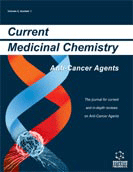Abstract
The normalization of plasma alanine aminotransferase (ALT) has been proved to be a strategy for preventing the development of hepatocellular carcinoma (HCC) in hepatitis C virus (HCV)-infection. Glycyrrhizin, a plant medicine, normalizes plasma ALT and prevents HCC. However, glycyrrhizin is administered intravenously and thereby chemical which is effective on oral administration is required. Coumarin compounds are active components of herbs used for the treatment of various diseases. The ability of coumarin compounds to lower plasma ALT were examined using mice concanavalin A-induced hepatitis and mice anti-Fas antibody-induced hepatitis. Furanocoumarins pd-Ia, pd-II and pd-III lower plasma ALT, but they are large molecules that are hardly absorbed on oral administration. Furocoumarin effectively lowers plasma ALT, but the safety range between the effective and toxic dosages is narrow. In contrast, osthole, a simple coumarin, causes strong reduction of plasma ALT and also inhibits caspase-3 activation. Furthermore, this chemical is quite safe upon large dose administration. In the structure of osthole, the methoxy group at position-7 and the 3-methyl-2- butenyl group at position-8 were elucidated to be essential for the beneficial effect of this chemical. We conclude that osthole will become a leading chemical for synthesizing a compound which prevents HCC on oral administration.
Keywords: hepatocellular carcinomas, coumarin, prevention, hepatoprotection
 13
13

















